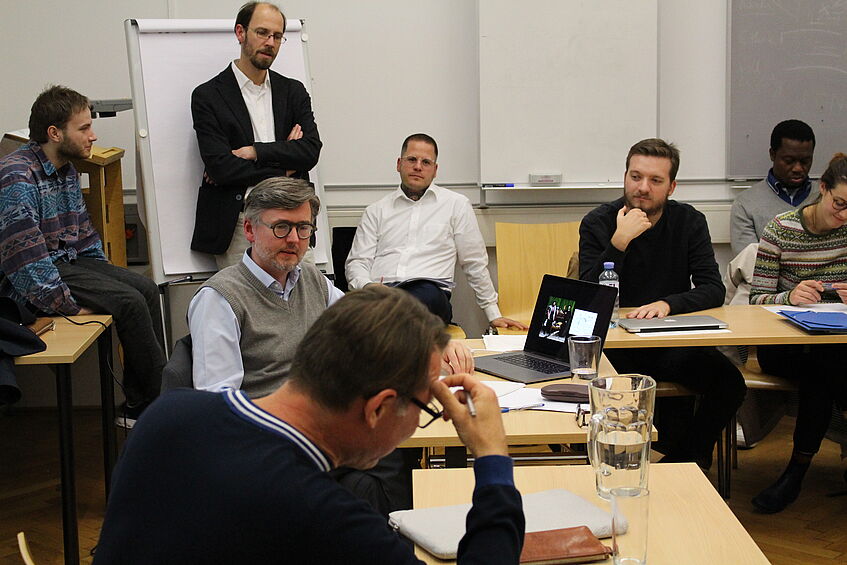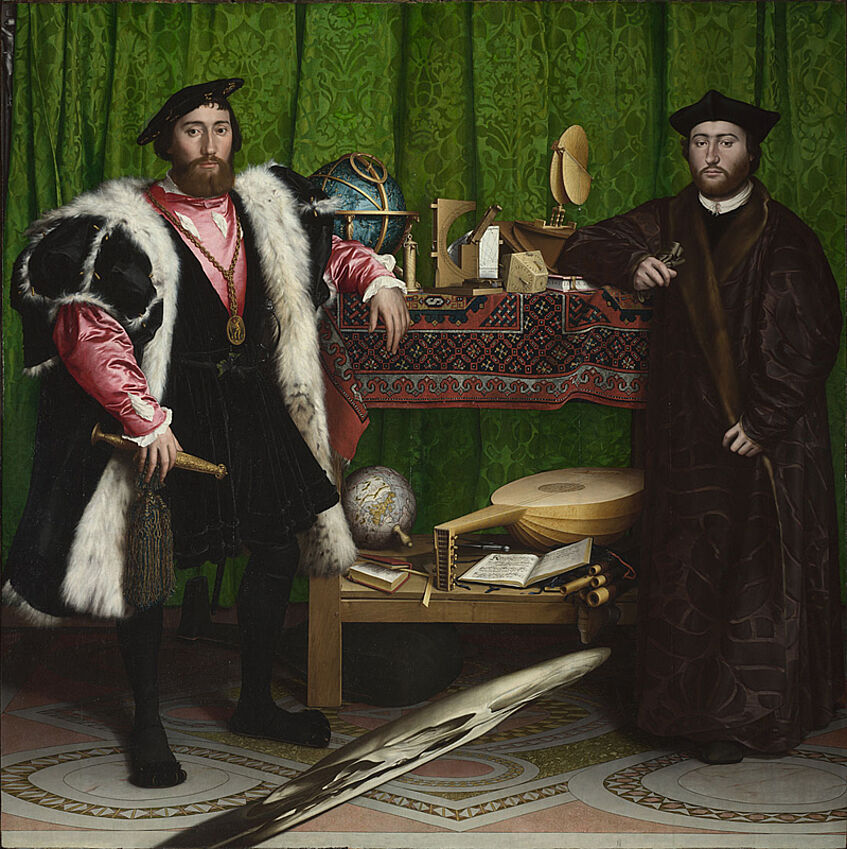Guest lecture by Dominik Finkelde SJ, "Anamorphose und Subjektivität im Raum der Gründe", October 24 2018
Guest lecture by Dominik Finkelde SJ, "Anamorphose und Subjektivität im Raum der Gründe", October 24 2018
On October 24, 2018, Dominik Finkelde SJ, Professor for Epistemology and Contemporary Philosophy in Munich (Hochschule für Philosophie München) gave a lecture entitled “Anamorphose und Subjektivität im Raum der Gründe” (“Anamorphosis and subjectivity in the sphere of reasons”) on invitation of the Department for Fundamental Theology. Starting point of his lecture were epistemological reflections concerning human perception that he related to Jacques Lacan’s theory of subjectivity. Finkelde referred to Lacan’s theory of the eye and the gaze and his considerations concerning the theory of painting of anamorphosis that Holbein the younger used in his paintings, paradigmatically in “The ambassadors”. In the light of that, the lecture’s issue was to outline the subject’s precarious positioning of itself within the world.
Following Finkelde, Lacan’s thoughts show that human perception and the subject itself have a rupture within themselves due to the gaze of the other. Holbein’s painting shows this in a paradigmatic way, referring not only to the borders of human cognition – the experience of cognition itself is not an object of cognition –, but also to the self-awareness of the beholder. Because the painting has to be perceived from two perspectives that exclude each other, the beholder senses that his own sight is subverted by a different gaze from the beginning on (at the bottom of the painting, a motive of vanity, the skull, can be identified – but only in course of averting one’s glance from the ambassadors). The painting’s dehegemonialized image screen symbolically shows the failure of the subject’s almighty gaze. Therefore, the painting’s image screen itself shows, how, following Lacan, the subject is already inscribed into someone other’s view, subverting it’s own. With other words: The subject finds itself in an infinite correlation of references that it cannot found within itself and that it can never overview totally.
Starting from this parallactic gap (Žižek), Finkelde developed a critique of substantial concepts, referring to German Idealism (Kant, Hegel). When the moment of in- and exclusion of someone other’s gaze that is expressed in the painting is applied for the relation between subject and world, it becomes clear, that the world is never to be understood as a sheer object. Rather, it is an expression of our ways of understanding, and this means, that the correlation of references in which we find ourselves is always founded in an absent perspective. This blind spot, that is as well deprivation as excess, remarks us, starting from somewhere else. That reminds of Lacan’s concept of the big Other and Master-Signifier At the end of his lecture, Finkelde tried to outline this connection, taking into account contemporary political theories.
Martin Eleven


